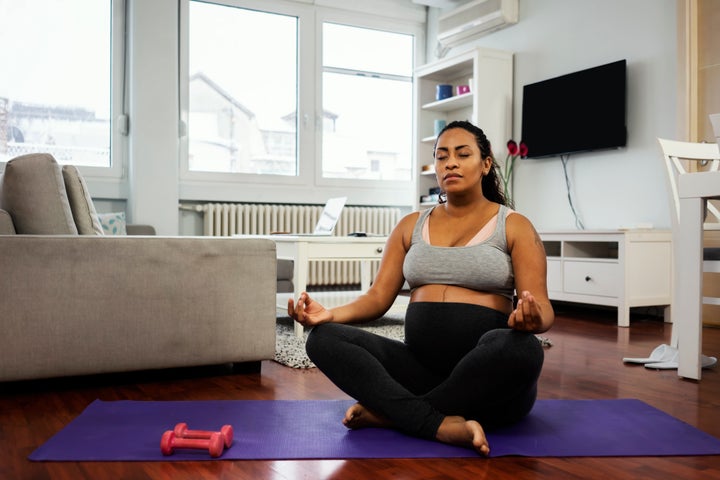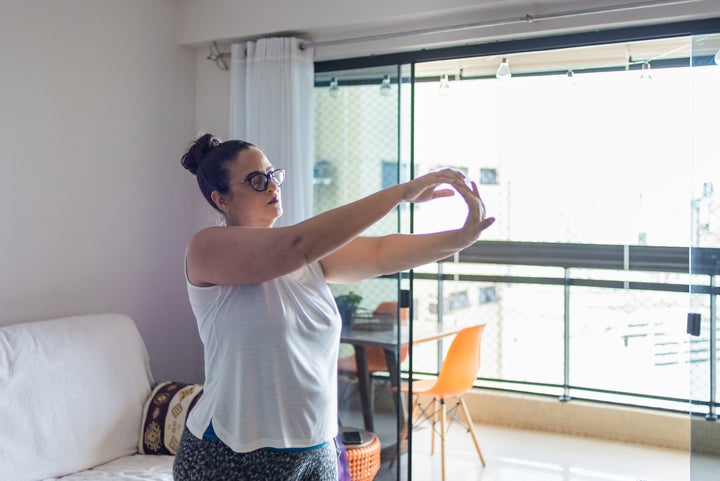
It’s time to reshape the full-body workout.
When we think of these types of routines, we typically think of working the core, glutes and legs, and arms. But if we want to really care for our overall well-being, we need to expand beyond those muscle groups. In fact, there are several areas we often forget to “exercise” when we’re working to improve our health, according to experts.
Here are other parts of our body that need love too:
Your Brain
We tend to think of our minds as separate from the rest of our physical health but they serve a vital function, and the brain benefits from training just as much as anything else.
Brain function is known to decline over time, but there are ways to reduce the risk of this happening, explained Rana Mafee, a neurologist in Westchester, Illinois. Though genetics do play a part in cognitive function, Mafee said it’s “environmental factors such as diet, sleep habits or chronic stress that slowly grind away at your brain, making you less sharp over the years.”
The good news is ― much like the way consistent physical exercise can improve our longevity ― exercising the brain on a regular basis can enhance cognition and have lifelong benefits. The idea is to use exercise to strengthen the longevity of neuroplasticity, which, in short, is the brain’s ability to adapt and master new skills, as well as store memories and information.
“A lack of mental exercise will gradually reduce the efficacy of the brain’s neurotransmitters, making it harder to concentrate, make and keep lasting memories or even perform everyday tasks,” Mafee said.
Adults should focus on keeping their brains active. We can do this in a variety of new ways, from learning a new language to navigating a new city. The key is to challenge our minds. We can also try picking up another hobby, like learning to play the piano or a new sport. Mindfulness meditation has been shown to help with this as well.
“In addition to healing and repairing cognitive decline, regular brain exercise can improve mental sharpness, improve your mood and your overall quality of life,” Mafee said.

Your Lungs
Keeping our lungs in good health should be a priority since they transport oxygen from the air we breathe into the blood, according to Alberto L. Rozo, a pulmonary medicine specialist at Northwell Health in New York City.
Exercise is needed for the lungs to function at peak performance and since “lung function declines gradually every year starting at age 35,” Rozo said, it’s important to incorporate habits that help increase our lung capacity.
This includes daily aerobic workouts and doing breath work like diaphragmatic breathing. Lie down on your back, placing one hand on your stomach over your belly button and one on your chest. Inhale through your nose for two seconds, feeling the air go into your abdomen and your stomach pushing out. Then breathe out for two seconds through pursed lips, allowing your stomach to deflate. Repeat several times.
Your Wrists
“It is important to exercise the muscles that control wrist function in order to optimize strength and joint stability,” said Joseph A Gil, an orthopedic surgeon in Rhode Island.
Paying attention to the wrists is especially important for anyone who does sports or exercises on a regular basis. A dedicated warmup that stretches the wrists and forearms could help prevent overuse or injury by “preparing the muscles and tendons to overcome the cumulative stress” that exercise might put on them, Gil said.
Stretching the forearm muscles with “wrist extension and flexion” is one of Gil’s favored techniques for warming up the wrists before working out.
Do this by lying your forearm flat on a table, allowing your hand and wrist to dangle off the edge. Bend your wrist down slowly, then bring it back up. Repeat several times, then move on to the other side. You can also do this with a small, light weight.
He noted that you might want to consult with a trainer to work on wrist range of motion before weightlifting, which “places high stresses on the tendons and ligaments around the wrist,” or yoga, “which requires extreme wrist position that predispose participants to ligament injuries.”

Your Toes
The five bones located just behind the toes, called the metatarsals, bear a great deal of our body weight and need special attention to remain in proper working order. According to Bruce Pinker, a foot and ankle surgeon in New York, there is somewhat of a “springlike quality to the metatarsal region, which helps to create the arch of the foot.” That flexibility requires maintenance to ward off injury and exhaustion.
Pinker said that by neglecting regular foot stretching, “you risk the chance of your feet tightening up or contracting, which can lead to pain.” And since many people experience some level of stiffness in their feet when they first wake up, Pinker also feels “it is important to stretch or exercise the tops of the feet upon awakening.”
To do this, take a page out of a dancer’s playbook: Kelby Brown, a dance and fitness coach in New York City, suggested trying point and flex foot progressions to strengthen and create flexibility in your toes and ankles. Start by sitting with your back against a wall and extend your arms at your side, “with the tip of the middle finger lightly pressed into the ground,” he said.
Then, brace your core and tightly hold your legs together. Point your toes from this point and count to four. Then flex your feet and count to four. Do this a few times. While in the stretched position, your feet should “resemble a cashew or banana,” Brown said.
According to Melissa Wood-Tepperberg, a certified yoga and Pilates instructor, you can also multitask and maximize foot flexibility with a standing quad stretch. Though this move is primarily designed to stretch the front of the legs, “you can bring the attention to your foot by using your palm to pull toes in to stretch the top of your foot,” she said.
“Shift all of your weight onto your standing foot and grab the opposite foot with the coinciding hand,” she explained. Holding a table or stable surface can help with your balance. Then, put your palm on your ankle. Flex your foot, then point your toes. After pointing and releasing the toes about 10-20 times, repeat on the other side.